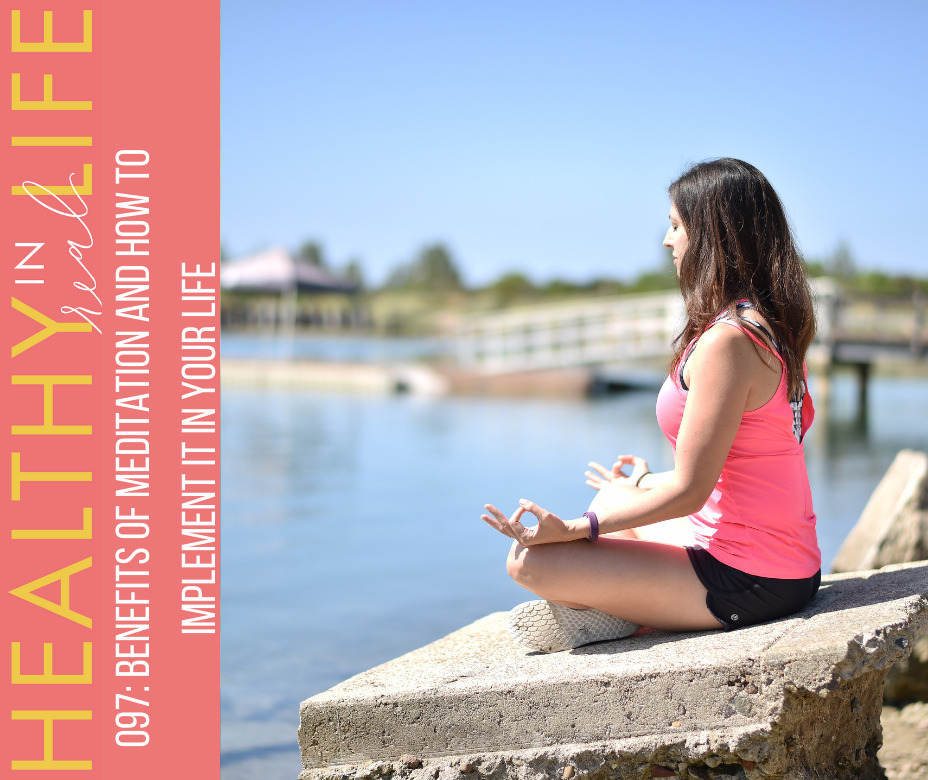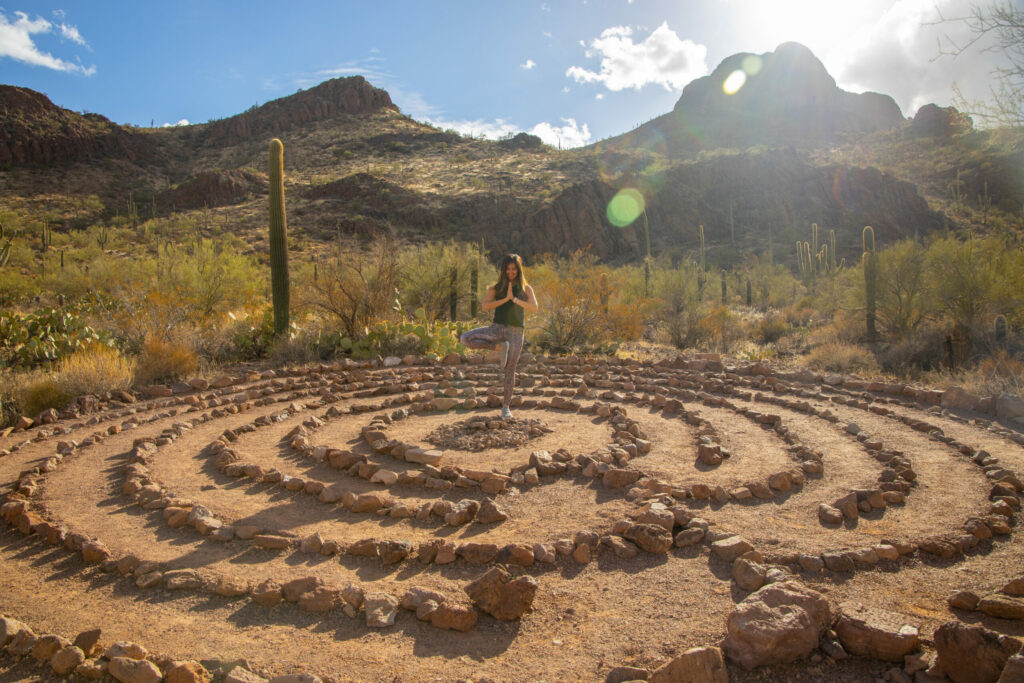097: Benefits of meditation and how to implement it in your life
Hi friends! I’m so excited to be partnering with Dr. Stephen Cabral on some upcoming podcast episodes, including this one. You can check out his 21 Day Detox at $100 off or a 7 Day Detox at $20 off here!
Today, we’re going to talk about something that has come and gone out of my life a few different times, depending on what was going on. I’m back into my meditation mojo right now and it’s been so incredible to make it a part of my life again. My dreams are vivid each night, I sleep soundly, and I feel more peaceful and focused throughout the day.
In today’s episode, I’m excited to share more about what meditation is, how to use it in your routine, and different forms of meditation you can try at home.
Listen to the full episode here:
097: Benefits of meditation and how to implement it in your life
Meditation has been linked to so many possible benefits, including promoting a healthy blood pressure, potentially improve anxiety, depression, and insomnia, and reducing chronic pain. It’s also been shown to potentially help with digestive issues and smoking cessation. It can also help increase resiliency to stress, which is a huge reason why I am thankful for it. According to a 2015 study from Social Cognitive and Affective Neuroscience, mindfulness practices dampen activity in our amygdala, which is responsible for experiencing strong emotions, like fear, pleasure or anger.
In this study, it demonstrated increased connections between the amygdala and prefrontal cortex, which help us to be less reactive to stressors and an improved stress response. Meditation has been immensely helpful in helping me to reduce stress and focus on the present moment more easily.
While meditation has been used in various cultures for thousands of years, it’s become increasingly popular in the United States in the past 15 years or so.
A 2017 National Health Interview Survey found that US adults’ meditation tripled between 2012 and 2017, and children’s meditation increased from 0.6% in 2012 to 5.4% in 2017. It’s estimated that 3.1 million US children use mindfulness meditation in school. It’s estimated that between 200 and 500 million people meditate worldwide, and the top 10 meditation apps generated $195 million in sales in 2019. (I’m realllyyyyy interested to know how much more they made in 2020 – now.)
Types of meditation:
There are so many different types of meditation, but it usually involves some combination of the following:
– a quiet location
– a comfortable posture
– focusing on breath
– drawing your attention inwards and letting wandering thoughts come and go
Just like so many other things in our health routines, meditation can have therapeutic properties, BUT it’s not a substitute for traditional therapy. If you’re struggling with anxiety or depression, please seek out the help you deserve.
How to meditate:
1) Find a comfortable position in a quiet space. You can sit in a chair, on the ground, on a yoga mat, or lie down (if you’re not sleepy). I use my PEMF Go Mat! I don’t recommend meditating in bed because you don’t want to tie meditation with sleep. You can also listen to crystal bowls, binaural beats on Spotify, or some instrumental slow music. What I love about meditation is you really don’t need any specialized equipment – you simply need your breath.
2) Set a timer. This can be anywhere from 5 minutes to an hour, depending on how much time you have. I’ve been doing 7 minutes lately, which doesn’t seem like a lot, but it’s just enough to feel the benefits and not overwhelming to the point that I won’t do it. Be realistic with your time goal and start small; build up from there. Maybe one day you can aim for 20 minutes!
3) Start to take deep breaths and just notice the rise and fall of your breath and all of the sensations around you. Feel yourself rooted into the ground or your mat, notice your heartbeat, any sounds around you, scents, the temperature of the air, and then bring your attention back to your breath.
4) Start to draw your focus inward and bring your attention to one specific thing as you breathe. I’m a huge fan of using a mantra in my meditation practice. When I did yoga teacher training, we learned Primordial Meditation (the Deepak Chopra method, as our instructor also taught at the Chopra Institute) and received our own personal mantra.
Some sample (and simple) mantras:
“Ham-sah” (meaning “I am that”)
“I love you, I’m sorry, Please forgive me, Thank You” – Ho’oponopono (Hawaiian) Mantra (Saul David Raye used this during a workshop, and I found it to be so healing and peaceful)
“Om” (there are 4 sounds to this: ah, oh, mmmm, and the silence that follows. “Om” is used as a charging sound, and brings intention to the universe)
You can also create your own, using two words that you want to FEEL throughout your day, or two words that resonate with you. On the inhale, think of one word, and on the exhale, focus on the second word. The combo that I used when I was first starting my meditation journey: peace (inhale), calm (exhale).
What happens if your thoughts wander during meditation?
It’s no.big.deal. Just notice what’s happening, let the extra thoughts go, and bring your attention back to your mantra and your breath. When I meditate regularly, I notice that my thoughts wander a little bit less.
If you don’t feel comfortable meditating on your own, you can absolutely try a guided meditation. There are SO many amazing resources now! You can use the Calm app, Headspace, Peloton meditation, or try a free one from YouTube (I love this gratitude meditation, which includes some of the soul questions I mentioned below).
Some other things you can do:
– “Sandwich” your meditation practice with other habits that make you feel good. Before meditating, sit and ask yourself the 7 questions of the soul. It’s a beautiful way to get to know yourself and tune in with your true self, desires, and purpose.
Who am I?
What do I want?
What is my purpose?
How can I serve?
– Try journaling before or after meditation, or use this time to read something you enjoy.
– You can also follow your meditation with some mobility work, sun salutations, or gentle movement.
– Or you can be like me and set your timer for 7 minutes and get on with your day. 😉
I hope that you enjoyed this short episode on meditation and also hope you feel inspired to test it out! If you decide to give it a whirl, please report back and let me know how it goes.
xoxo
Gina
More:
Breathing exercises for anxiety
You vagus nerve and why you should care about it
Resources from this episode:
Check out Dr. Cabral’s Detox program here and get a 21 Day Detox at $100 off or a 7 Day Detox at $20 off.
Your liver filters all of the blood in your body every 6 minutes, but with the influx of toxins in our environment, our livers cannot keep up and our bodies have no choice but to store these toxins away in our fat cells, organs, and even our brain so they are not floating around in our blood stream. Over time this toxic buildup begins to cause symptoms of poor health and eventually can lead to all types of dis-eases in the body. The Dr. Cabral detox is a comprehensive, full body Functional Medicine detoxification system that gently eliminates harmful toxins while rebalancing the body at an underlying root cause level. I can’t wait to do this myself and you can get all of the details here!
Thank you so much for listening and for all of your support with the podcast! Please be sure to subscribe, and leave a rating or review if you enjoyed this episode. If you leave a rating, head to this page and you’ll get a little “thank you” gift from me to you.










Hi Gina, I loved the podcast, I am not one for meditation, I think it’s because I thought it should be a long drawn out process where I thought of nothing. I love that you gave the option of as little as five minutes, and to combine it with journalling to the soul questions. I will definitely be adding this to my routine.
Hi Gina! Thank you for this episode! I’m looking forward to diving in. I also just listened to your anxiety episode which I loved and very much appreciate as I’m working on managing my anxiety right now (have a great therapist and just looking for tips on tools like meditation). One thing you said at the beginning of this episode, though, made me want to bring up OCD. I thought OCD was just counting rituals and way too much hand washing (not really, but you know what I mean!), but then working with my therapist, found that thinking we might have control over things very much outside of our control, and changing the way we do things to try to manage our anxiety about these things outside our control (but we kind of have this feeling we can…) is a sign of OCD and it’s treated differently from “regular” anxiety. This was extremely eye opening for me and, frankly, at first I dismissed it, but then reading more made me realize that, whoa, I have a form of OCD. Just thought I would put this out there in case this could help anyone else! I found Lynn Lynn’s podcast (Flustercluck) to be SUUUUUPER helpful. <3